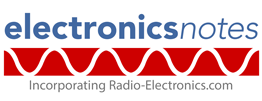Home » Component data » SiC MOSFET data » this page
NTBG020N090SC1 SiC MOSFET Data
Data for the NTBG020N090SC1 900V 20mΩ silicon carbide MOSFET including electrical parameters, maximum current and voltage, pin connections, package type and many other datasheet details.
Key details and performance parameters for the NTBG020N090SC1 SiC MOSFET.
| NTBG020N090SC1 Silicon Carbide MOSFET datasheet parameters & data |
|
|---|---|
| Parameters | Details |
| Brief description | 900V |
| Package type | D2PAK-7L / TO263-7L |
| Operational mode | Enhancement |
| Channel type | N-channel |
| Drain to Source voltage VDSS | 900V |
| Drain to gate voltage VDGR | |
| Gate to source voltage VGSS | +22 / -8V |
| Maximum drain current continuous ID | 112A at 25°C |
| Maximum drain current pulsed ID | 448A at 25°C |
| Zero gate voltage drain current IDSS | 100µA at VDS=900V, VGS=0V and 25°C 250µA at VDS=900V, VGS=0V and 175°C |
| Gate threshold voltage VGS(th) | 1.8V min, 2.6V typ, 4.3V max with VGS=VDS and ID=20mA |
| Static drain source ON resistance RDS(ON) | 20mΩ typ, 28mΩ max at VGS=15V, ID=60A and 25°C 16mΩ typ, at VGS=18V, ID=60A and 25°C 27mΩ typ, at VGS=15V, ID=60A and 175°C |
| Forward transconductance gFS | 49 for VDS=20V and ID=60A |
| Input capacitance | 4415pF |
| Output capacitance | 295pF |
| Reverse transfer capacitance | 25pF |
| TJ °C | 175 |
| PTOT mW | 477W |
| Primary manufacturer | On Semiconductor |
Outlines & pinout:
Explanation of SiC MOSFET parameters
| Parameter | Explanation |
|---|---|
| Operational mode | This details whether the FET is an enhancement or depletion mode |
| Channel type | The channel of the MOSFET can either be an N-type channel where electrons are the majority carriers or P-type where holes are the majority current carrier. |
| Drain to Source voltage VDSS | This is the maximum voltage that can be sustained between the drain and source |
| Gate to source voltage VGSS | This is the maximum voltage that can be sustained between the drain and the gate. |
| Maximum drain current continuous ID | This is the maximum current that can be carried byt he device. Sometimes there may be a differentiation between the continuous and pulsed or peak values |
| Parameter | Explanation |
|---|---|
| Zero gate voltage drain current IDSS | This is the current carried by the device when the gate voltage is zero. The test conditions are normally stated for this. |
| Gate threshold voltage VGS(th) | This is the minimum gate-to-source voltage, VGS required to create a conductive channel between the source and drain terminals |
| Static drain source ON resistance RDS(ON) | This is the resistance of the device when turned on. The test conditions of voltage and current are normally given for this. |
| Drain source ON voltage VDS(ON) | This is the voltage across the device when it is turned on. Again the test conditions are given. |
| Forward transconductance gFS | Forward transconductance also given the letters gm is defined as the change in drain current (ΔID) for a small change in the gate-source voltage ΔVGS, with the drain-source voltage, VDS held constant. |
These are the main SiC MOSFET parameters that have been included in our list. Being a form of MOSFET, they are basically the same as other FETs and MOSFETs.
Please note, that the data given is the best estimate we can give within a tabulated summary of this nature. Parameters also vary between manufacturers. Electronics Notes cannot accept any responsibility for errors, inaccuracies, etc, although we do endevaour to ensure the data is as accurate as possible.
Notes and supplementary information
• Availability & sources
The NTBG020N090SC1 is available from a number of stockists and electronic component distributors many of which are given in the table below.
NTBG020N090SC1 Component Distributor, Stock and Pricing
• Further details
The low RDS ON of 28mΩ typical at 15V and the high maximum voltage along with all the other benefits of silicon carbide MOSFETs mean that this device is ideal for use in uninterruptible power supplies, DC-DC converters, boost inverters and other forms of switch mode power supply.
• Notable features
The NTBG020N090SC1 is a silicon‑carbide (SiC) MOSFET optimized for high voltage, high efficiency power switching, combining low conduction losses with fast switching and robust robustness.
Voltage rating : 900 V drain‑to‑source (V_DSS)
Low on‑resistance : typical R_DS(on) ~ 0.020 Ω @ V_GS = 15 V, and max ~0.028 Ω under specified conditions.
High current capability : 112 A continuous (at case temperature) under ideal cooling, and 9.8 A under ambient conditions (Ta) in typical mounting.
Low gate charge : total gate charge (Q_G) ~ 200 nC (for V_GS = –5 V to +15 V).
Capacitances : input capacitance C_iss ~ 4415 pF (V_DS = 450 V) and output capacitance C_oss ~ 295 pF.
Fast switching / diode recovery : reverse recovery time for the body diode ~ 28 ns, with Q_rr ~ 186 nC, and avalanche robustness spec (E_AS ~ 264 mJ).
Thermal / power dissipation : 3.7 W at ambient (Ta) and up to 477 W at case (Tc) with good heatsinking.
Wide temperature range : junction operating range −55°C to +175°C
Robust construction : 100 % avalanche tested, RoHS compliant, surface-mount D2PAK‑7L (TO‑263 style) package.
Gate voltage tolerance : rated gate‑to‑source voltage +22 / –8 V (absolute), recommended gate drive ±5 to +15 V operation.
• Typical applications summary
| Application Category | Typical Use Case | Device Feature Utilised |
|---|---|---|
| High‑voltage DC/DC converters / boost converters | Switching stage in high-voltage boost or step‑up converters | High breakdown voltage and fast switching with low losses |
| Uninterruptible Power Supplies (UPS) / Inverter stages | Inverter leg switching, power stage devices for high DC bus voltage | Low R_DS(on) and robust thermal capability |
| Solid‑state switch / power switch modules | As a high-side or low-side switch in power modules or switch arrays | High voltage margin, robust gate drive and high current switching |
| Motor drives / traction power electronics | DC link switching / chopper stages in motor drive inverters | High efficiency switching and thermal robustness |
| Class D / high‑frequency power stages | Fast switching stages in high-frequency power converters | Low gate charge and fast switching transitions |
| Renewable energy / solar inverters | Inverter switching or boost / buck stages in PV power conditioning | Ability to handle high voltage, efficiency under variable load |
 Written by Ian Poole .
Written by Ian Poole .
Experienced electronics engineer and author.
Return to Component Data menu . . .




